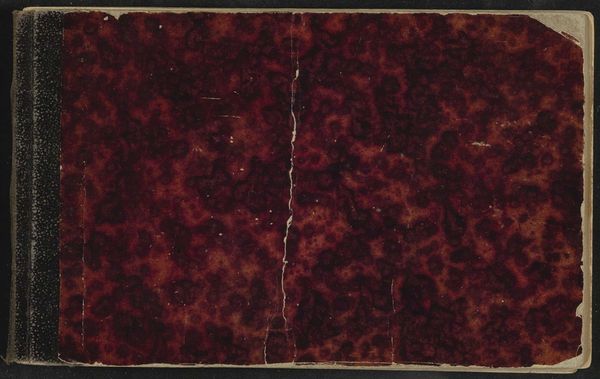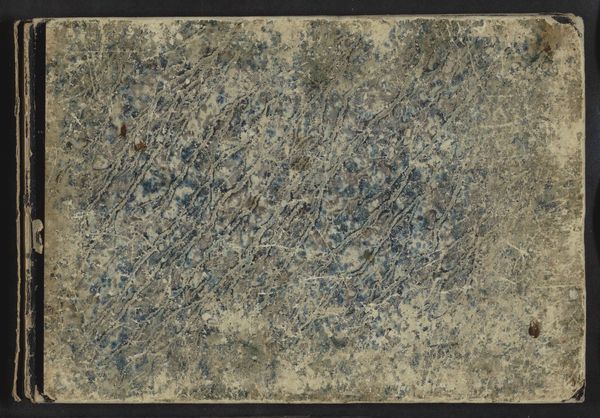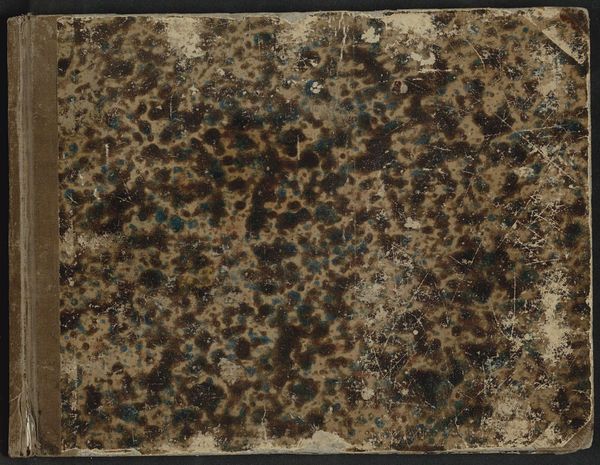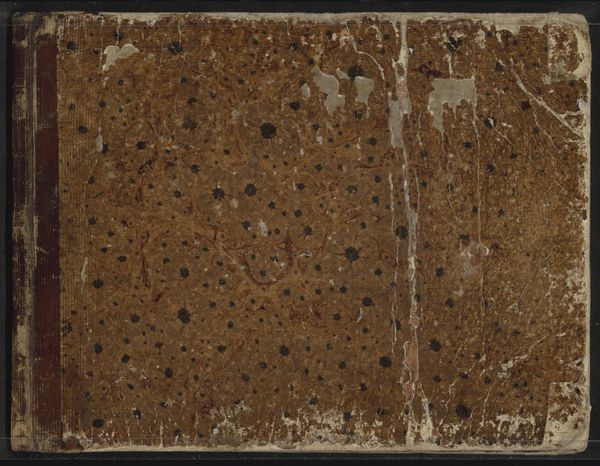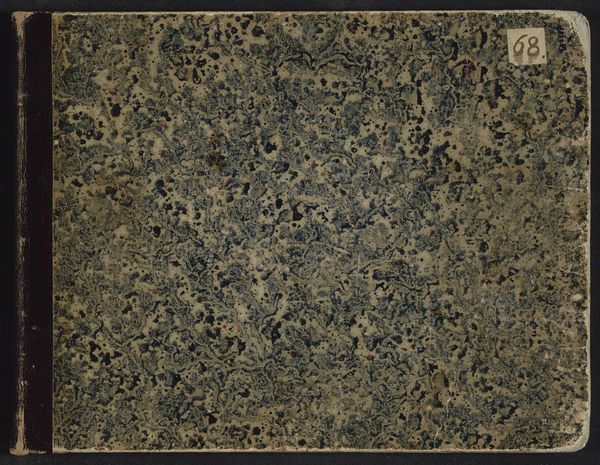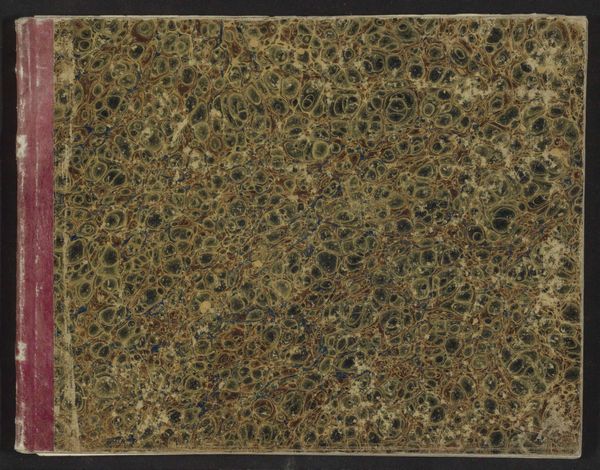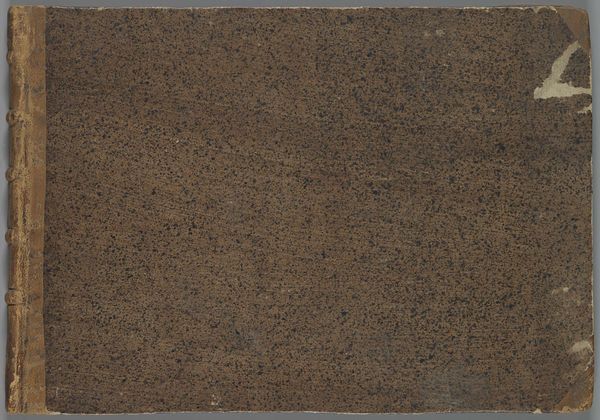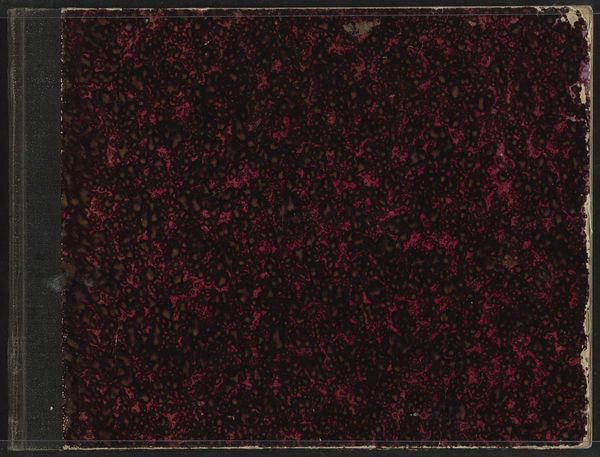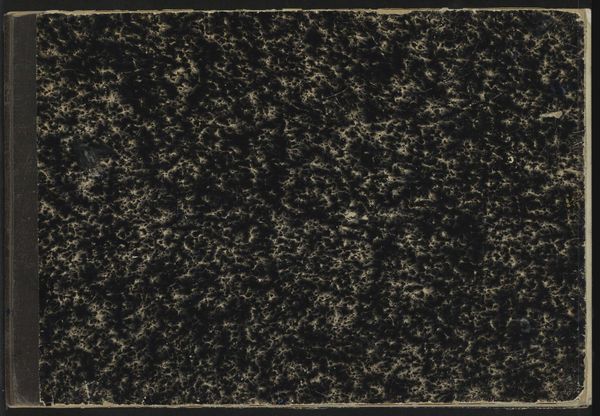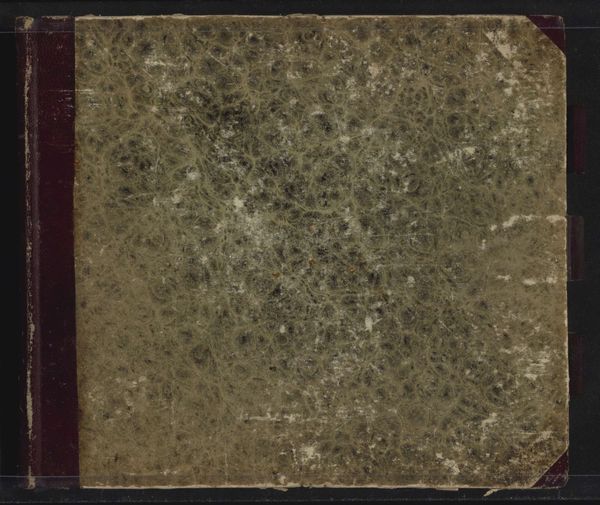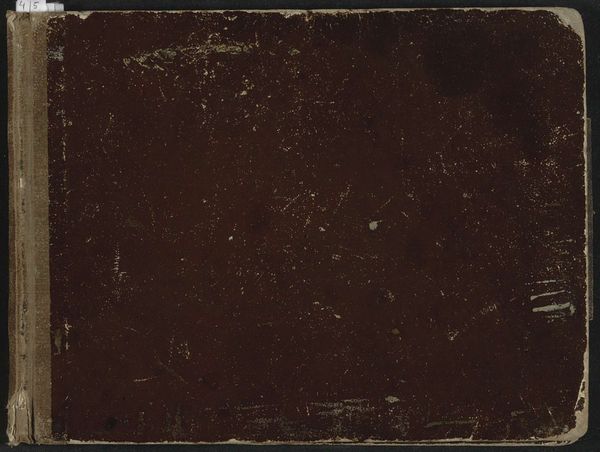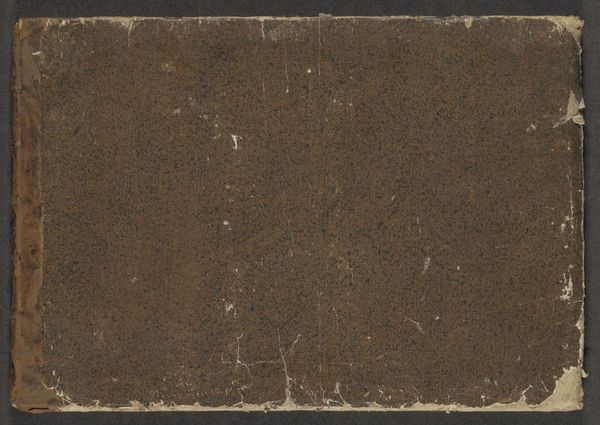
drawing, paper
#
portrait
#
drawing
#
impressionism
#
paper
Dimensions: height 125 mm, width 229 mm, thickness 10 mm, width 466 mm
Copyright: Rijks Museum: Open Domain
Curator: This sketchbook with 36 sheets by George Hendrik Breitner, created between 1883 and 1885, offers an intimate look into the artist’s process. It’s a glimpse into a mind brimming with ideas. Editor: The cover gives me the shivers, that distressed burgundy and mottled texture… like old wallpaper ripped from a haunted house. Almost evokes a Victorian obsession with decay and the macabre. Curator: Oh, I find that rather dramatic, don’t you think? I see the beauty in its weathered quality, a testament to its journey alongside the artist. The paper, even unseen, breathes history, wouldn't you say? Editor: But what was the paper's source, I wonder? Were these mass-produced sketchbooks readily available or something more artisanal? The industrialization of art supplies definitely plays a role in Breitner's accessible approach. Curator: Absolutely! The proliferation of affordable materials democratized artmaking in a way that allowed talents like Breitner to flourish. But consider this—each drawing, a snap of daily life—street scenes, portraits...they feel so spontaneous, so fleeting. Editor: Fleeting maybe, but also filtered through a lens. He's making choices, right? What to include, what to omit. Breitner’s sketching reveals not just what he sees, but the means through which he captures what he sees. How were these images shared, viewed, commodified? Curator: You raise such important points. Perhaps in Breitner’s sketchbooks we glimpse not only his art, but also a burgeoning, changing city viewed from within – both impressions of urban life but of something deeper, almost private and raw in its form. It is, after all, an open invitation. Editor: So we find ourselves scrutinizing the book itself, as a symbol of both creative potential and a reflection of an emerging social framework. Interesting how something so seemingly simple holds layers and layers of interpretation. Curator: Indeed, and that's the magic, isn't it? We’re not just seeing; we’re constantly re-seeing and rethinking an artist’s inner sanctum.
Comments
No comments
Be the first to comment and join the conversation on the ultimate creative platform.
